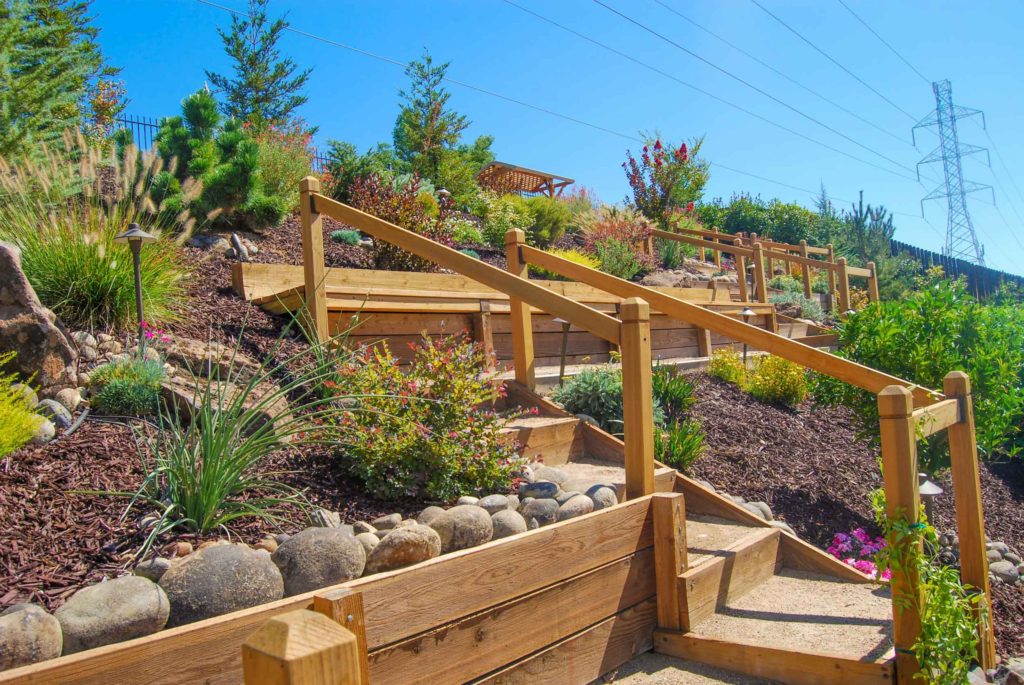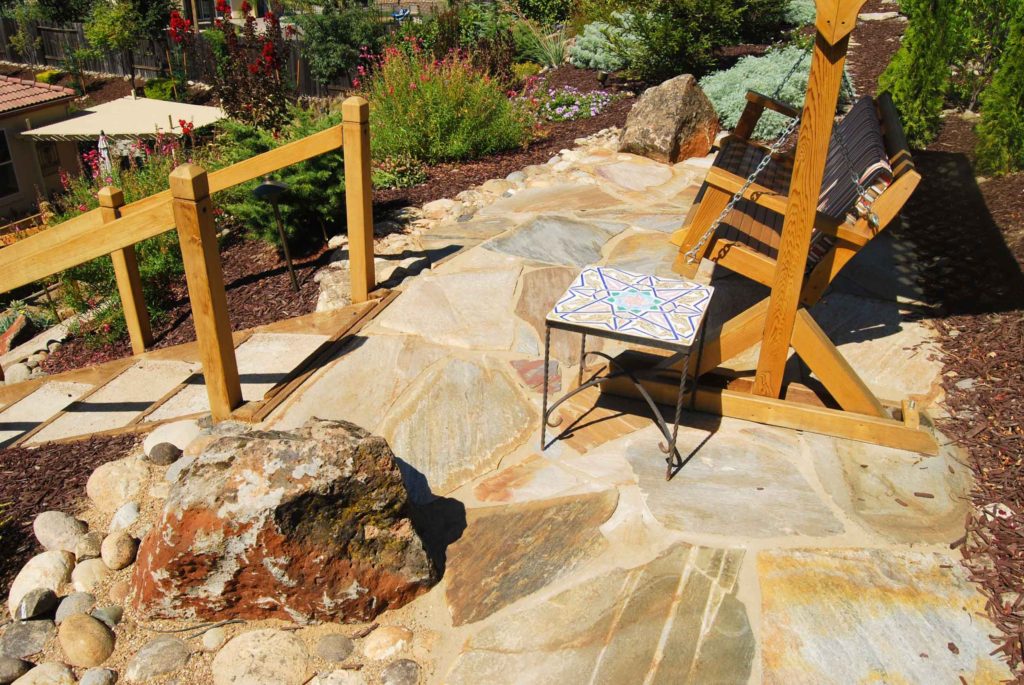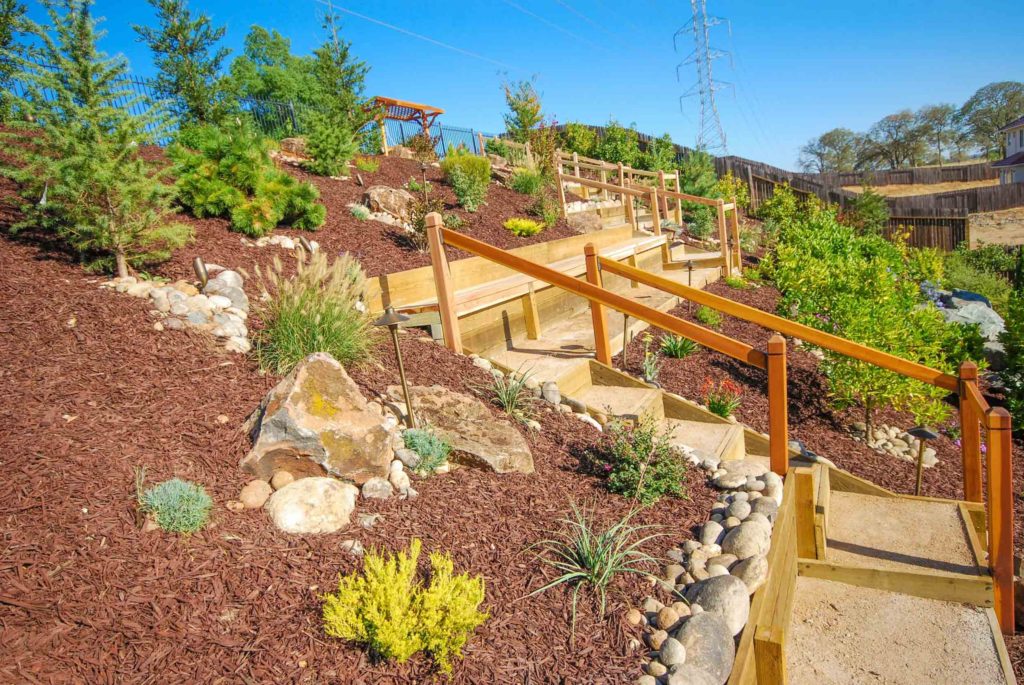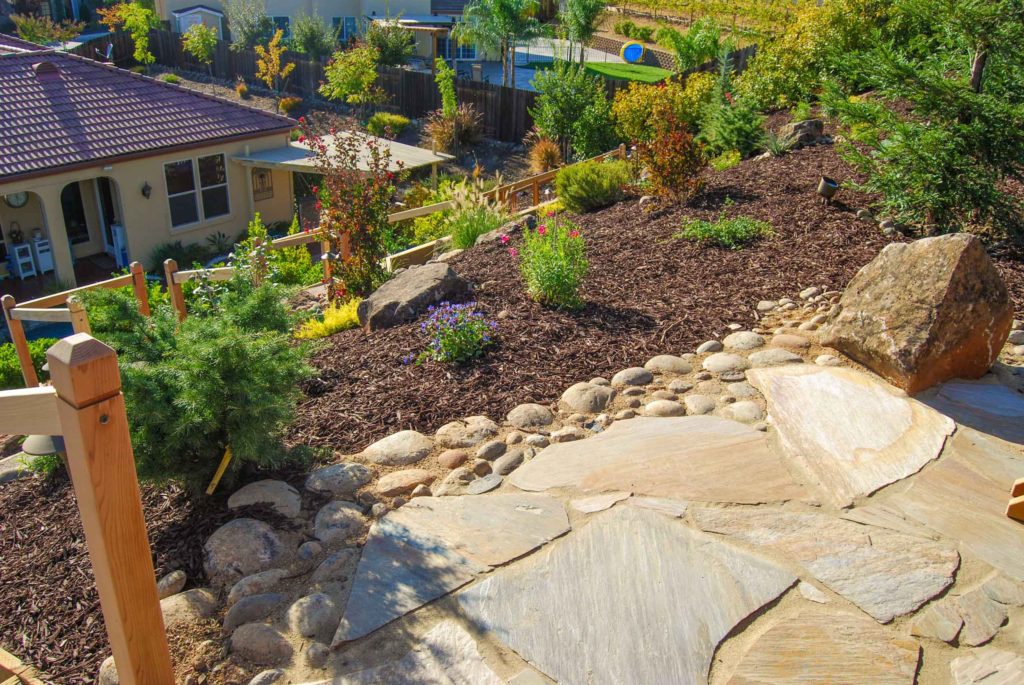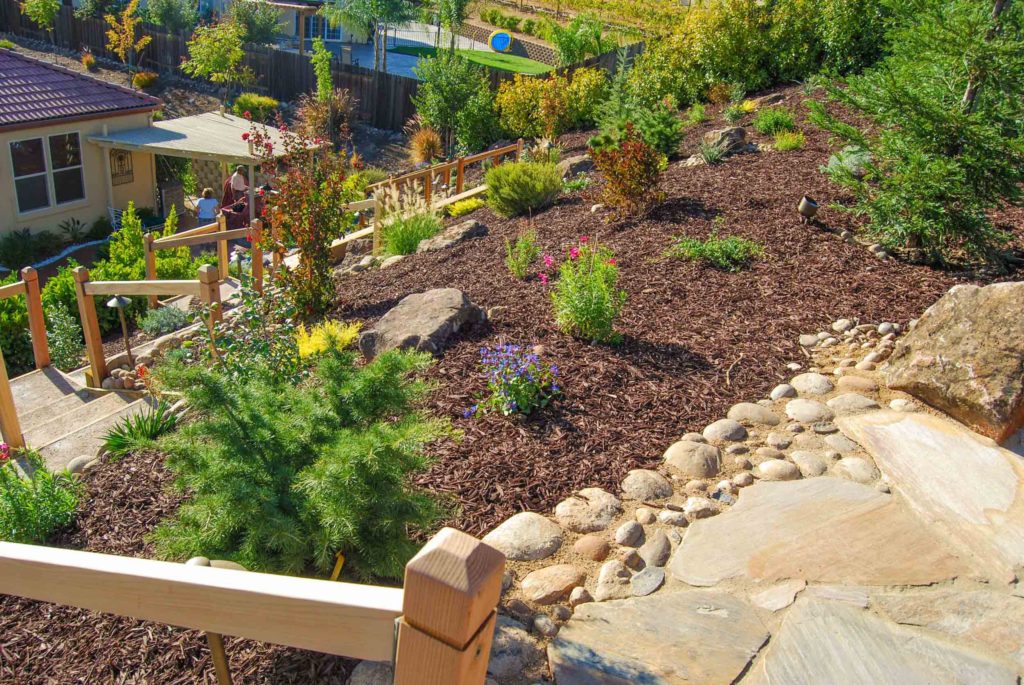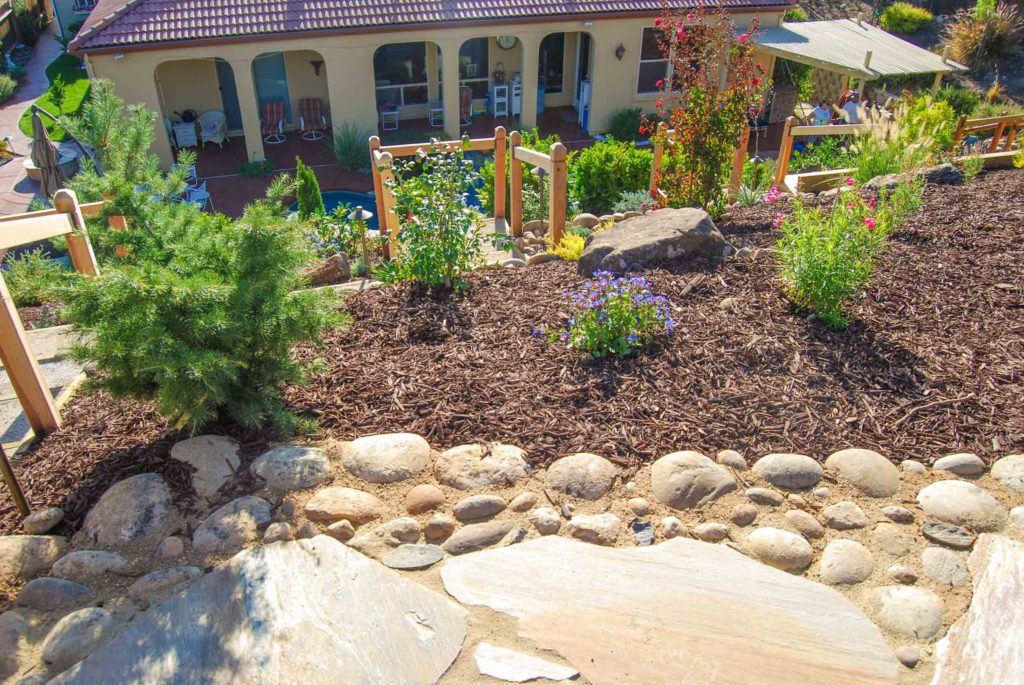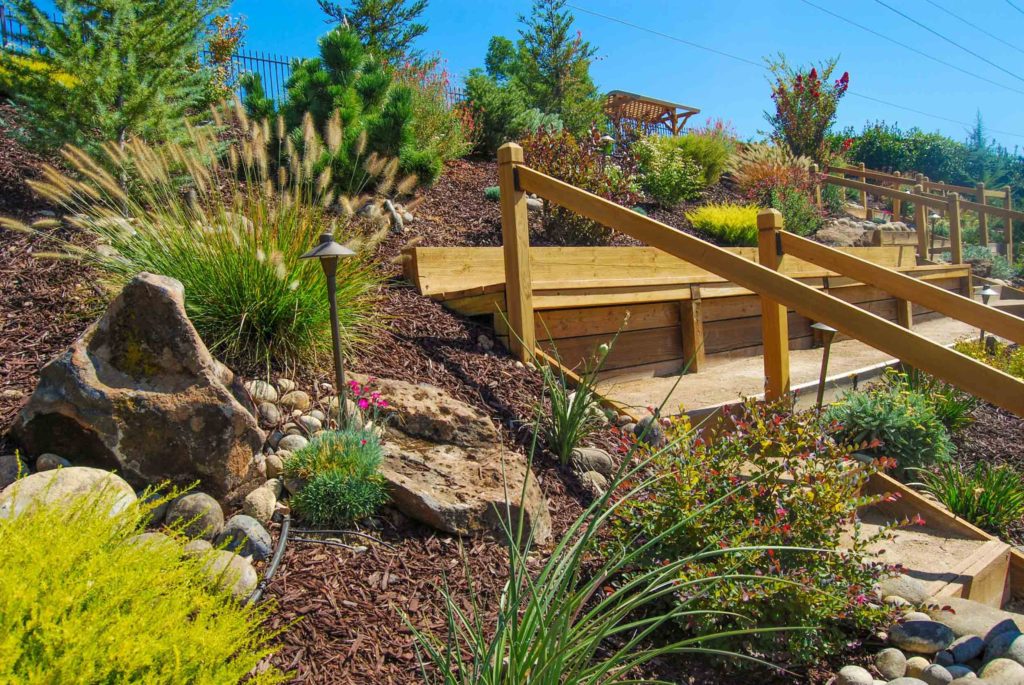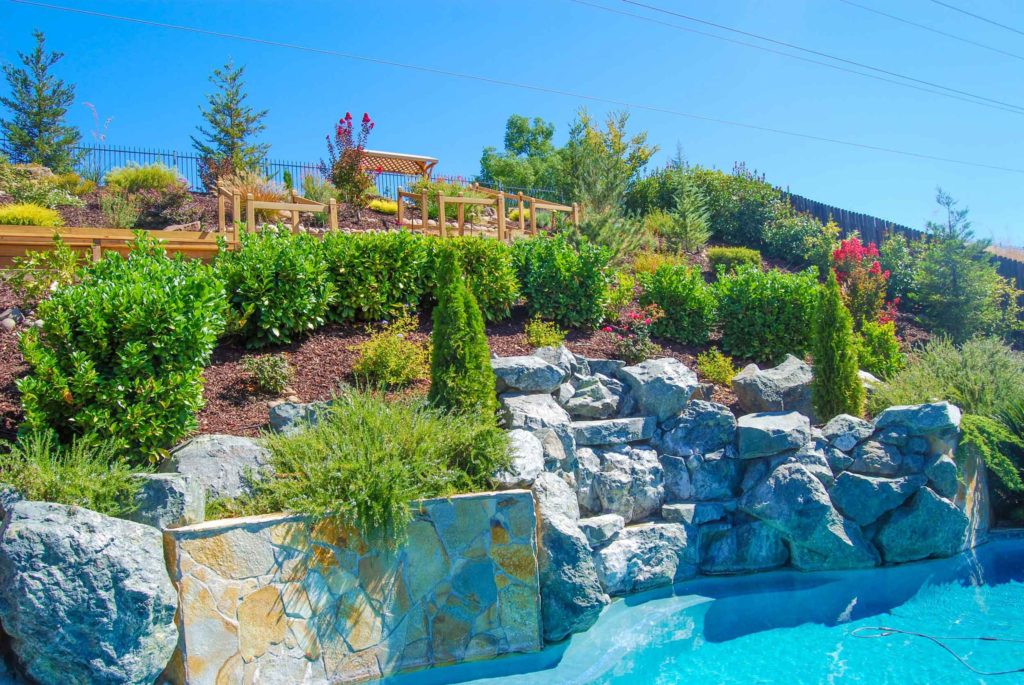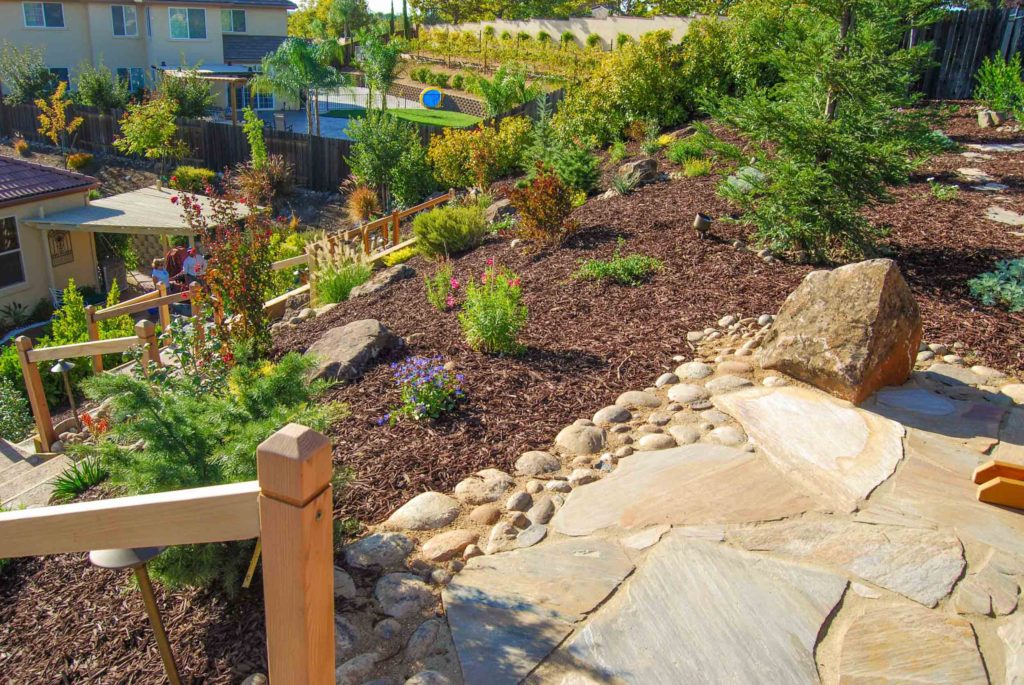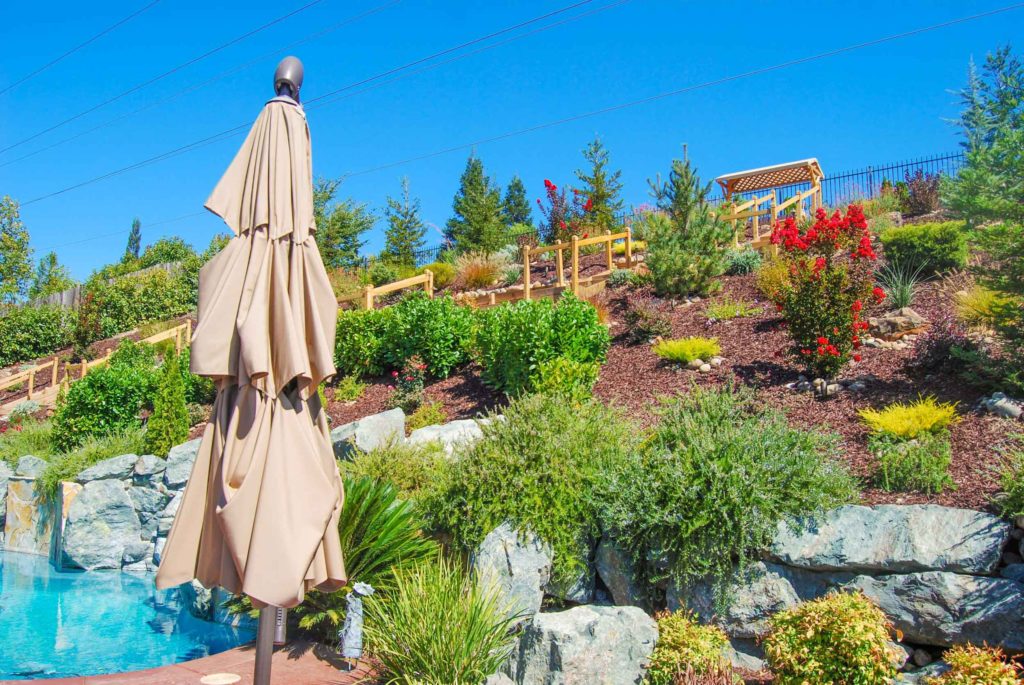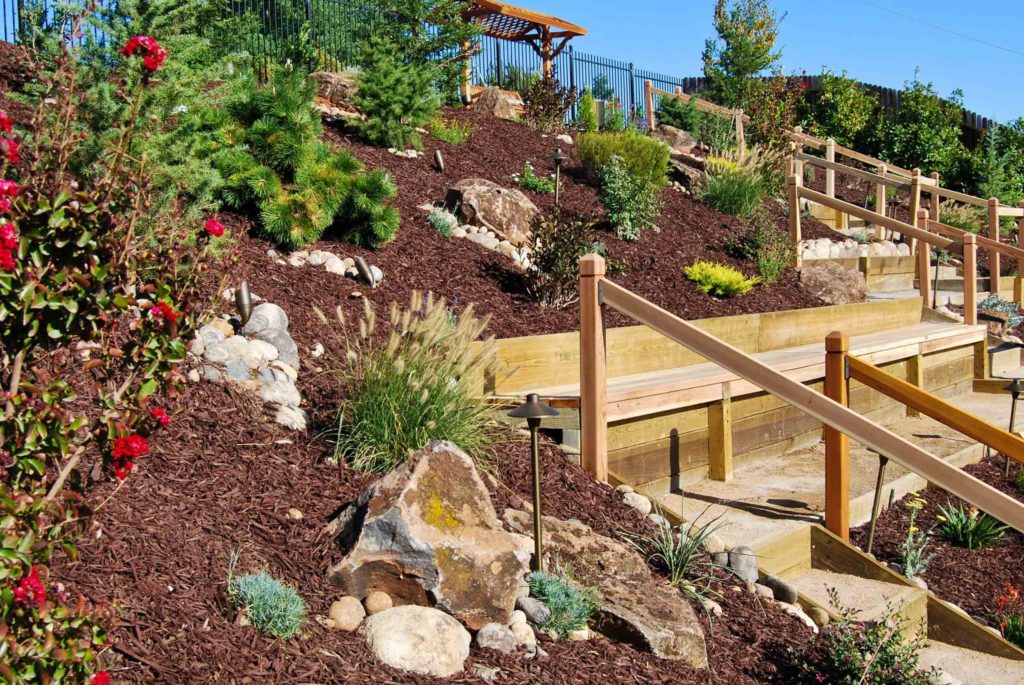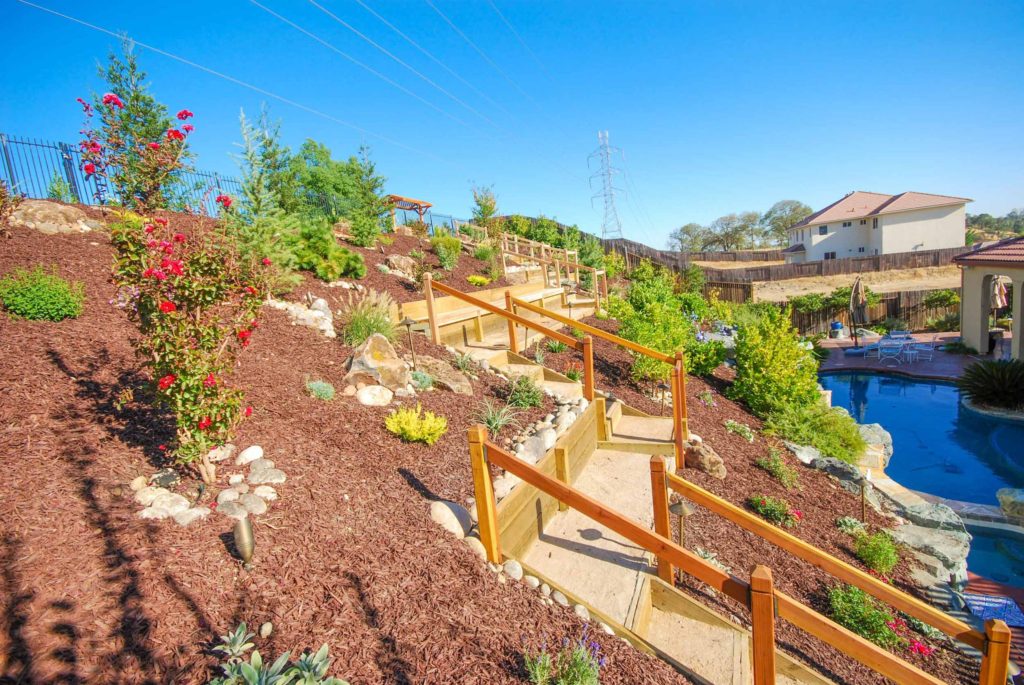
Welcome to our April edition. Spring is here, and it’s very beautiful with all the different flowers in bloom. Like everyone else, I feel the business of life, especially during the spring season. However, I make myself stop and appreciate its beauty. It only comes once a year, so taking the time to look, observe, and at times smell, is good for the soul. It makes me love what I do even more, and I would encourage you to do likewise.
People will often ask what the hardest terrains are to landscape; without a doubt, it has to be slopes, especially in the summer. Whether it’s Rocklin, Folsom, El Dorado Hills, or Auburn, the one thing these slopes all have in common are rocks! At times we uncover boulders, but mostly a lot of cobble. As difficult as this terrain is, it is nothing that time, patience, jackhammers, and a pair of strong arms can’t handle. The job we are featuring is in Rocklin, and we have featured it before; however, it has been about a year and a half, and the plants have really grown. This home was new, so the landscape was bare.
The slope we are showing is really the neighbor’s two houses down. I get excited when starting a job and sometimes forget to take a before picture, but its basically the same slope. There are several important aspects involved when considering a hill landscape; however, I will share the two most important ones. I want to leave room to show the before, the completion, and finally today’s look of the slope.
Proper irrigation—I will come to a slope already landscaped, and the first thing I look for is how the water is being delivered to the plants. It’s never right, and the plants show it. Without getting too technical, you can push water uphill only so far before limitations occur. When that happens, the plants beyond that point suffer. However, if you spend the time to trench and run a PVC water line to the top of the hill, and from there attach the valve and run the drip line across the face of the hill, you get consistent water.
This hill has three valves, one for the top, midpoint, and lower. It costs more in labor and materials to do it this way; however, what is the point of landscaping if the plants will die in a couple of years? It is critical to get the irrigation right. Part of the irrigation process is knowing how many valves you need and making sure a valve is not overtaxed with too many plants. You must also make sure each plant receives two emitters. I get super annoyed when I only see one emitter. These last two concerns are true whether landscaping a slope or not, but they are extremely critical when a slope is involved.
Plant selection and placement—There are plants that are not suited for slopes. They are not strong growers and should never be used on slopes. Even if we have amended the slope, eventually the roots will make it into the rocky soil, so the plant needs to be a good grower. Some people feel the easiest solution is to use native plants, and to some extent, this is true. However, some of the native plants require a lot of pruning and the last thing you want is a high maintenance slope. So, with respect to toughness, natives fit the bill, but they are not always the best choice.
The next thing to know is which plants can tolerate soil that is wetter than normal. These will be the plants that you plant at the bottom. The plants that like a drier condition go to the top, and in the middle are your average water need plants. If you know the plant, you can manipulate this a little. The bright yellow plants at the base are Rockroses and they are fairly drought tolerant, yet I planted them at the base. Farther up, I planted Loropetalum (Chinese Fringe), which normally would not go that high up the slope. Another important consideration is the view. The Rockrose stays low, and the Loropetalum Dwarf (the only high maintenance plant I used) gets up to 4 feet if left unpruned. If planted at the base, it would block the view of the rest of the slope, which always needs to be considered when laying out the plants. When we terraced this hill, as we do with all our hill landscapes, we brought in enough topsoil blend and so I was able to break a few of my own rules.
There’s more to slope landscapes than these two rules; however without these two it does not matter what you do, the landscape will eventually fail and become an eyesore.
Gardeners now is the time to plant. Remember the vegetables come in small, but they grow quite a bit so allow ample space.

